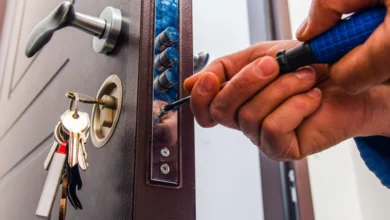In the US, about 20% of all energy is generated using renewable resources.
Renewable energy offers a range of advantages, and people all over the world are turning to it over traditional energy sources. Of those available, solar energy is one of the most widely used. You can install solar panels on your home to have a reliable supply of clean energy.
Before doing so, however, you need to know what solar installation involves. There are various things to think about to ensure you get a solar energy system that’s suitable for your home.
Keep reading to find out everything you need to know about solar panel installation.
Planning Your Solar Installation
When it comes to solar energy systems, it’s not as simple as buying the equipment and connecting it to your home. There are a lot of things you need to take into account. Proper planning will ensure you end up with a system that provides a suitable amount of energy for your home.
Evaluate Your Electric Bill
Energy bills are on the rise, and being able to generate renewable energy through solar panels can help. This is one of the main reasons that so many people are turning towards solar energy. After the installation, you’ll start saving money immediately.
Certain variables determine how much you’ll actually save. Installing more solar panels, for example, will allow you to generate more electricity, reducing how much you need to use from the grid.
Working out how much energy you currently use will help you determine how many solar cells you should get. Note that you may be limited by things like how much space you have to install your solar panels.
If there’s anything that blocks the sun such as other buildings or trees, it might reduce how much power you can generate. It may be possible to actually generate more electricity than you need. In this case, you can send it back to the grid, and you’ll be paid for it.
Determine Your Home’s Efficiency
You can determine how efficient your home is through a home energy audit. This will highlight any issues that are preventing your home from being as efficient as it could be.
You can then make changes to these problem areas, resulting in a more energy-efficient home. Some common solutions include replacing old appliances, adding insulation, or switching to energy-efficient lightbulbs.
Decide How Suitable Your Home Is for Solar
Once you have an idea of how efficient your home is, you need to decide whether it’s suitable for a solar installation. There are various tools you can use to get an estimate of your home’s potential for a solar energy system. Some of the most important things to consider are:
- Roof space
- Roof orientation and angle
- Potential shading
- Roof age
- Homeowner’s association restrictions
If you find your home isn’t suitable, you’ll need to look into other energy solutions. In most cases, however, solar energy is a good option.
Explore Available Incentives
A key benefit of a solar installation that many people still don’t know about is incentives. Federal and state governments have started to set these up in recent years, so you should look into what’s available in your area. The idea is to encourage people to go green and rely less on energy sources that are harmful to the environment.
One example of this is the Residential Clean Energy Credit. It allows you to claim 30% of the installation costs from your taxes.
Note that there are plans to decrease this in the future, eventually eliminating it completely. The sooner you get your solar installation, the more you’ll benefit from this incentive.
There may also be state-level incentives that you can take advantage of depending on where you live, Look into this for your local area to see what kind of savings you could make.
Compare and Choose an Installer
By this point, you should have a good idea of what you need. You can now start contacting different solar installers to find out if they can do what you need. You should be able to get free quotes which you can then compare.
Don’t just go with the cheapest option. Look at things like the installer’s previous work and read through some reviews so you can find a company that you know you can rely on. Go here now for an example of an installer that provides solar installations all over the US.
Five Steps for Installing Solar Panels
Once the planning stage is completed, you’ll have a good idea of exactly what you’re going to install. It’s important to note that the installation itself takes some time.
In most cases, it will take between one and three months, but this can vary. There are five major steps to the entire installation process.
1. Engineering Site Visit
After signing your solar contract, an engineer will need to evaluate your home. They’ll check the electrical status to make sure the installation can go ahead as planned. The engineer will typically work with the installer, but some companies will hire an independent engineer.
Some of the things they’ll assess are the condition of your roof and the electrical panel (typically in the basement) to make sure they can support the installation. Your installer may inform you that they need to upgrade your electrical panel before installing your solar energy system.
Note that the engineering visit is different from a general site visit. A general visit is to allow the installer to design your system based on things like the type and angle of your roof.
2. Permits and Documentation
A solar installation is a big job, and therefore a big financial decision. As such, there’s a lot of paperwork that needs to be dealt with. This will first cover any federal and state incentives that you’re applying for. You might also be applying for financing options, so you’ll need to sort this out.
As a large home improvement job, solar installation typically requires building permits. These will be specific to your location — your installer should know exactly what you need, and will likely take care of them for you.
3. Ordering Equipment
With all the paperwork taken care of and everything planned out, your installer can then order all the equipment needed. You will decide on the exact equipment for your installation before signing the contract.
Your installer will likely make recommendations of what you should have. You’ll still be able to have some input, just bear in mind that the professionals know how it all works, so it’s generally worth following their guidance.
4. Solar Panel Installation
This is when the installation finally takes place. The installer will bring the equipment to your home, and get started. The timeline can vary, but your installer should be able to give you an estimate before they get started.
There are five main steps for this part of the process:
- Checking and prepping the roof
- Placing wiring to connect your solar energy system to your electrical panel and power system
- Installation of racking to support solar panels
- Attaching the panels to the racking
- Connecting the panels to the inverter(s)
Any reputable company will do all of this, but some less reputable companies might take shortcuts. It’s important to note that even with a timeline estimate, there may be unforeseen issues. As such, things could take longer than expected.
5. Approval and Interconnection
With everything installed and connected, you can now start using your system to generate electricity. You’ll immediately start turning solar energy into power for your home, but it won’t be connected to the grid quite yet.
A representative from your town government will need to assess and approve your system first. Their job is to look at everything the installer has done and make sure everything is safe and correct. If it meets all roof setback and electrical codes, they’ll approve it.
After this, your utility company will send a representative for a final evaluation. Once they give the okay, your panels will go live. This part of the process usually takes a couple of weeks, and after that, everything will be done.
Your Solar Panel Installation
Renewable energy is the future, and installing solar panels on your home is a great way to start reducing your carbon footprint. It’s important to find a reliable company to design and install your system, so take the time to research the options in your area. Don’t forget to look into the incentives that are available so that you can save some extra money.
For more home improvement articles check out some of our other blog posts.





